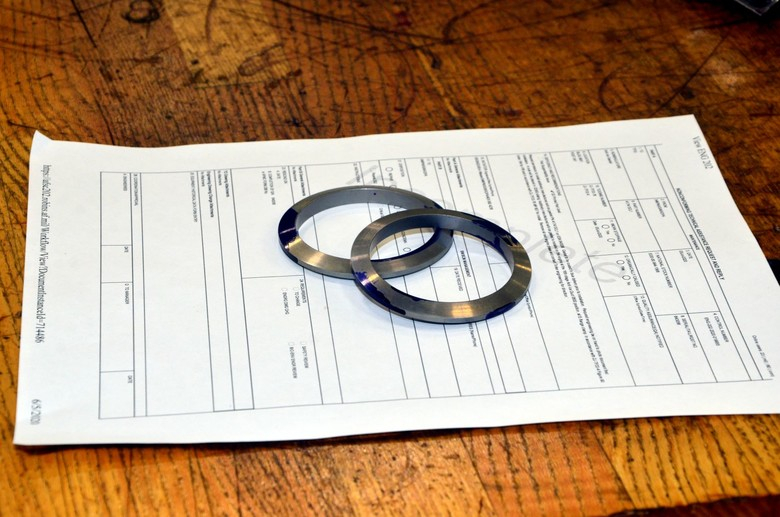Engineers from the Oklahoma City Air Logistics Complex, a wing of the Air Force Sustainment Center, have become the first to successfully test a 3D printed metal component inside a U.S. Air Force aircraft engine.
The “significant milestone” bodes well for aircraft that are powered by the TF33-P103 engine, such as the E-3 Airborne Warning and Control System and the B-52 Stratofortress, as it paves a new route for future sustainment and spare part production.
The anti-ice gasket
The part that was 3D printed was an anti-ice gasket, a component critical to the safe and efficient operation of the TF33 in sub-zero environments. This gasket was recently found to be in short supply, as the official guidance states that it should be discarded and replaced after use.
Johnny Tsiao, propulsion structural competency lead at the Life Cycle Management Center, explains: “This accomplishment is truly a historical first. This is a digitally designed and digitally engineered component that represents a substantial milestone in Air Force sustainment. Although it is a basic component, the technology our OC-ALC team has developed will help resolve supply chain issues and help bring further capacities to support the warfighter.”

Reductions in lead time
To date, the Reverse Engineering and Critical Tooling Lab (where the printing is done) has produced 30 anti-ice gaskets. Engineers from the 76th Propulsion Maintenance Group, working collaboratively with the Oklahoma engineers, performed a successful engine acceptance test run back in early July, marking the 3D printed gaskets ‘flight-safe’. To add to this, the team found that they could massively reduce lead times from around 120 days to just 14 days through the use of additive manufacturing.
Richard Banks, 76th PMG delegated engineering authority engineer, explains: “One of the things we found in this collaboration is that we could potentially solve the supply shortage by reengineering and printing something, and proving it was safe to fly. This type of engineering makes it easier to source materials, greatly reduces lead time, and ultimately helps to reduce logistical and supply issues.”
The Oklahoma engineers are optimistic about additive manufacturing’s potential in Air Force aircraft sustainment. While 3D printed metal components are currently nowhere to be found in military engines, much less the battlefield, the team expects major strides in the next 24 months.

Elsewhere, a collaborative project between GE and the Air Force got underway last year but has not yet reached engine testing. In May, the project hit its first major technology milestone with the 3D printing of a sump cover for the F110 jet engine which is used on both the F-15 and F-16 aircraft. Much like the gasket, the sump cover is designed to form a durable seal in the engine and is critical if the entire system is to function.
More recently, the Life Cycle Management Center’s B-2 Program Office cleared a 3D printed non-critical component for use on the B-2 Spirit, aka the Stealth Bomber. The permanent protective cover will be mounted on the accessory drive decouple switch located in the cockpit of the aircraft. It is designed to prevent the accidental activation of the switch, which links the engines to the hydraulic and generator power of the bomber.
Subscribe to the 3D Printing Industry newsletter for the latest news in additive manufacturing. You can also stay connected by following us on Twitter and liking us on Facebook.
Looking for a career in additive manufacturing? Visit 3D Printing Jobs for a selection of roles in the industry.
Featured image shows the B-52 Stratofortress bomber. Photo via U.S. Air Force.



